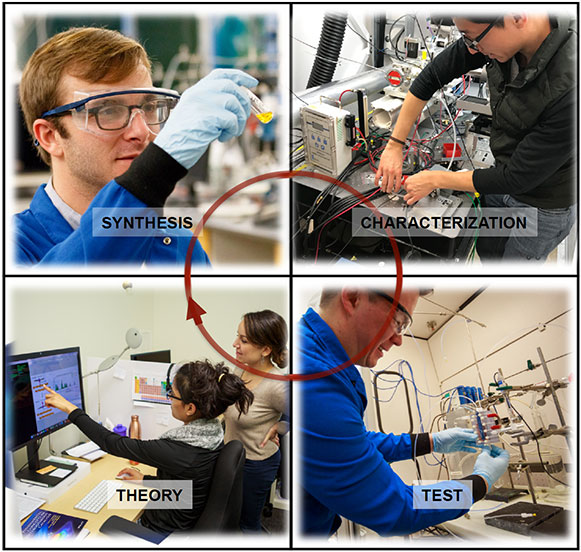
The SUNCAT-FWP was founded in June 2010 and since then a substantial theoretical effort combined with experiments has been established. The SUNCAT Center for Interface Science and Catalysis seeks to develop an understanding of the factors determining the catalytic properties of solid surfaces and to apply these insights to processes and catalysts of importance for energy transformations and for sustainable chemical production. The Center is a joint venture between SLAC National Accelerator Laboratory and the School of Engineering, Stanford University.
The Center has activities that are funded by several funding agencies and industry, but the foundational basis for the activity is the DOE FWP at SLAC. The SUNCAT-FWP focuses on the basic principles governing surface catalyzed chemical processes. The underlying philosophy is that by having a fundamental understanding of the way surfaces catalyze a chemical reaction we can make a quantum leap in our ability to make predictions for new catalysts and processes. This requires the development of a theory of heterogeneous catalysis (including electro- catalysis) based on computational and experimental results. The close coupling of theory and experiments by exploring the same systems and phenomena in parallel is an essential component of our approach.
